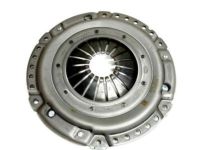My Garage
My Account
Cart
Genuine Saturn LS Pressure Plate
Clutch Pressure Plate- Select Vehicle by Model
- Select Vehicle by VIN
Select Vehicle by Model
orMake
Model
Year
Select Vehicle by VIN
For the most accurate results, select vehicle by your VIN (Vehicle Identification Number).
2 Pressure Plates found
Saturn LS Plate Assembly, Clutch Pressure (W/ Cover)
Part Number: 24239613$109.42 MSRP: $220.67You Save: $111.25 (51%)Ships in 1-3 Business Days
Saturn LS Pressure Plate
Each OEM Saturn LS Pressure Plate we offer is competitively priced and comes with the assurance of the manufacturer's warranty for the part. Furthermore, we guarantee the speedy delivery of your orders right to your doorstep. Our hassle-free return policy is also in place for your peace of mind.
Saturn LS Pressure Plate Parts Questions & Experts Answers
- Q: How to remove Clutch Disc, Pressure Plate, and Release Bearing on Saturn LS?A: To remove the clutch components without taking the engine out, first of all, start by removing the transaxle from the vehicle. Use an engine support fixture or hoist to ensure that it is properly supported. Put a clutch alignment tool through the clutch disc hub to hold up the clutch disc as you remove it. For proper aligntment make sure that there are indexing marks on both sides of a flywheel and pressure plate or manually put them in place. Gradually loosen criss-cross patterned pressure plate-to-flywheel bolts, take them off and then remove the pressure plate and clutch disc. Check for defects on the flywheel that can be cured by machining its surface flat and smooth at a machine shop. The lining of the clutch disc should be inspected for wear and damage, focusing especially on loose rivets, cracks, broken springs/dampers among others. Generally speaking, replace your old friction material with new one. Also replace a faulty release cylinder/release bearing assembly for your safety. Look over pressure plates for signs of glazing, excessive wear or damage, replacing as necessary. Carefully clean all surfaces of flywheel and pressure plate using an appropriate solvent or brake parts cleaner as necessary. Position an aligning tool against both sides of flywheel so as to centre clutch plate before tightening clamping screws crisscrosswise one after another until they get tight enough in specified order (torque). Reinstall previously removed transaxle plus put back release cylinder into place too.






